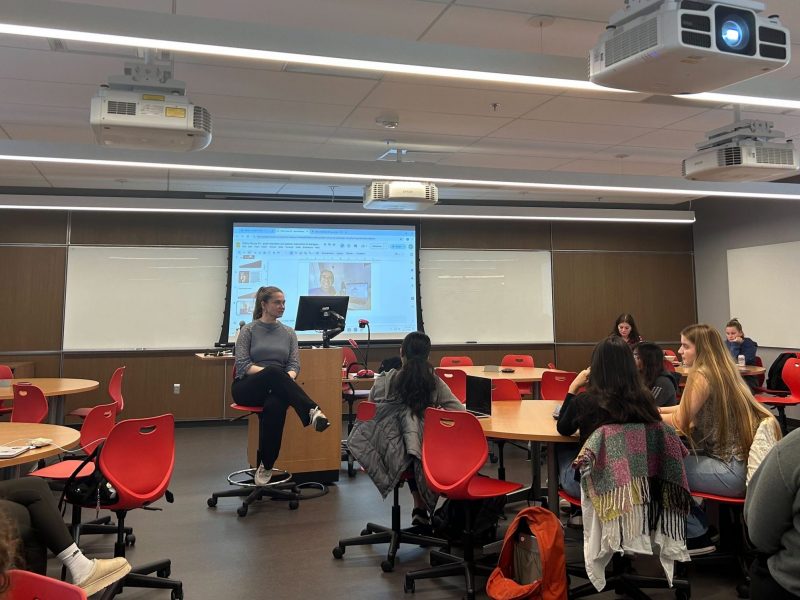
Georgia Institute of Technology professor David Hu has studied ant locomotion, such as Brazilian fire ants’ ability to Velcro together to survive floods.
David Hu said he appreciates the little things in life — from studying the way snakes slither to the way Brazilian fire ants could be the future in robotics.
The 36-year-old biology and mechanical engineering professor at the Georgia Institute of Technology shared his six years of ant locomotive research Friday afternoon with about 50 engineering students and faculty members in J.M. Patterson.
“At NPR, they call me an ‘engineer who puts numbers on animals,’” Hu said. “I just like to find out how animals work, and that usually just starts out from some everyday experience.”
Hu presented a lecture about how Brazilian fire ants have acquired the ability to Velcro together like a “raft” in order to survive natural floods common in the region. They form a water-resistant barrier by linking their arms, feet and teeth together and secrete drops of fluid from their feet to help them glide. Analyzing the way ants adjoin during a flood may help engineers develop micro robots that can get to hard-to-reach places and come together to form a larger robot.
“You’d want to use them in a place where you don’t have the capacity to bring very many different robots, and you’d want to bring robots that can morph into different shapes,” Hu said, “If you can imagine outer space … you’d have this multipurpose robot that could turn into a wrench, or a hammer, or another device that could move around and is made out of these building blocks.”
READ MORE: A quick look at biotechnology today and its future possibilities
The lecture was part of the Maryland Robotics Center Seminars, sponsored by Lockheed Martin, a global security and aerospace company with headquarters in Bethesda.
Derek Paley, an aerospace engineering professor and director of the seminar series, said he invited Hu to speak after meeting at a workshop last year about bio-inspired soft robotics.
“David’s research on ants and how they interact with one another to form these incredible moving patterns of organisms is something we’re very much interested in,” Paley said. “Our work doesn’t focus on ants, per se, but we are very interested in the collective behavior of fish and even in mosquitoes, which is something David’s looked at in the past as well.”
Fourth-year doctoral candidate Elena Shrestha attended Hu’s seminar because she studies space and rotorcraft robotics, and actively searches for events on the campus that relate to her field.
“The topic was interesting,” Shrestha said. “I look for robotic seminars, usually. I’m doing space robotics and rotorcraft, so anything related to that I just show up.”
READ MORE: Robotics Realization Lab gives UMD students space to build robots
Hu, a Massachusetts Institute of Technology alumnus, is not afraid to get close and personal with all types of critters. He has run labs focusing on topics such as how long it takes an elephant to urinate, why eyelashes exist and how many times grizzly bears shake themselves to dry off.
Many of Hu’s ideas come from analyzing the people and things that are close to him, he said, including the “urination duration” experiment that arose after changing his son’s diapers.
In September, Hu won the Ig Nobel Prize, which honors achievements that make people “laugh and then think,” according to Improbable Research.
Hu’s eyelash research revealed how eyelashes are about one-third of the width of the eye, and that length can protect the eye from and evaporation two times more than if the lashes were missing or twice as long. This research, Hu hypothesized, can be used to create fibers to reduce dust accumulation on solar panels or space robots.
“We try to get really scientific about it, usually all of these projects start out as something fun,” Hu said, “but then, when we find something we can’t explain, it starts getting really interesting.”


